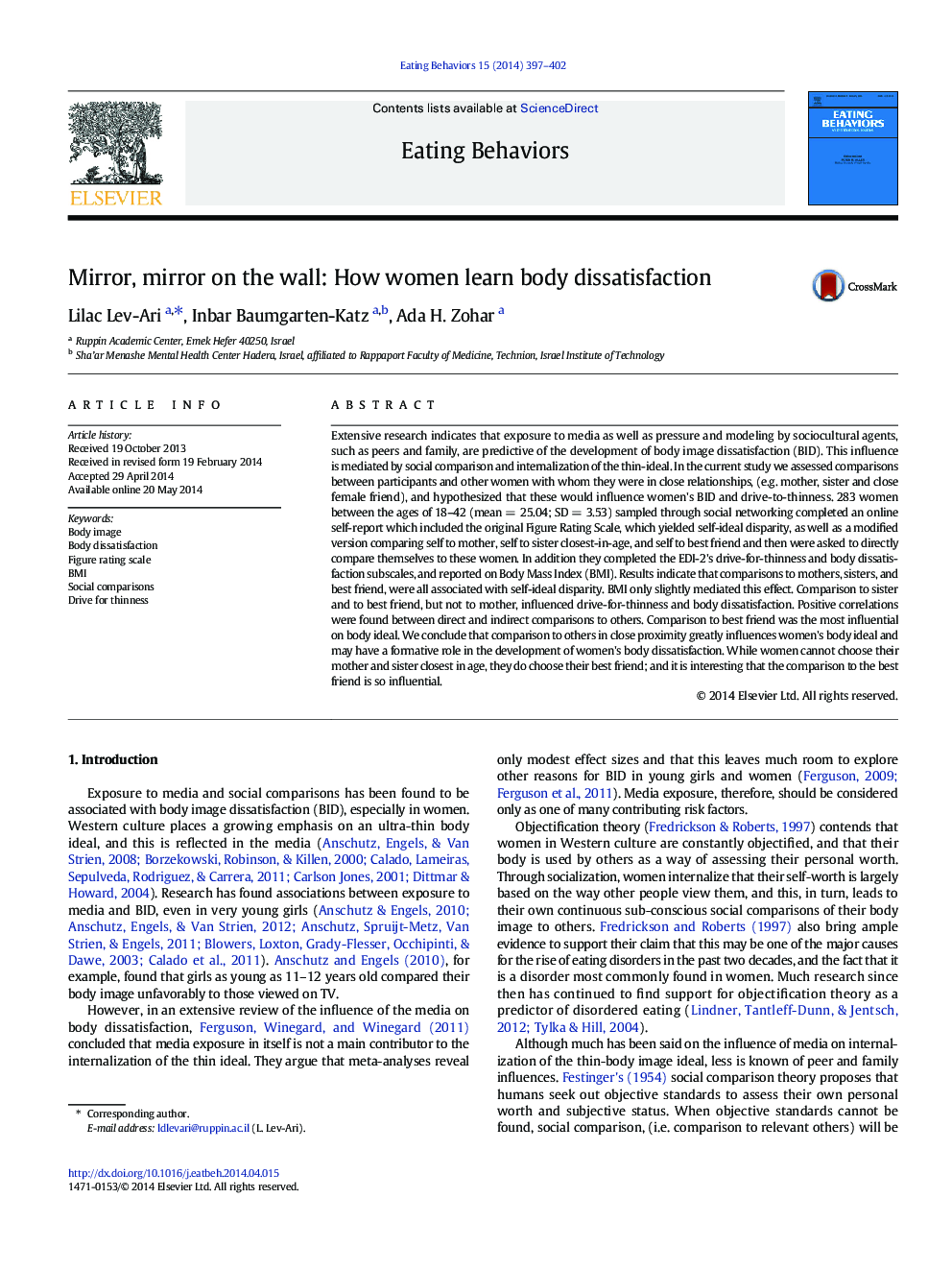| Article ID | Journal | Published Year | Pages | File Type |
|---|---|---|---|---|
| 906356 | Eating Behaviors | 2014 | 6 Pages |
Abstract
Extensive research indicates that exposure to media as well as pressure and modeling by sociocultural agents, such as peers and family, are predictive of the development of body image dissatisfaction (BID). This influence is mediated by social comparison and internalization of the thin-ideal. In the current study we assessed comparisons between participants and other women with whom they were in close relationships, (e.g. mother, sister and close female friend), and hypothesized that these would influence women's BID and drive-to-thinness. 283 women between the ages of 18–42 (mean = 25.04; SD = 3.53) sampled through social networking completed an online self-report which included the original Figure Rating Scale, which yielded self-ideal disparity, as well as a modified version comparing self to mother, self to sister closest-in-age, and self to best friend and then were asked to directly compare themselves to these women. In addition they completed the EDI-2's drive-for-thinness and body dissatisfaction subscales, and reported on Body Mass Index (BMI). Results indicate that comparisons to mothers, sisters, and best friend, were all associated with self-ideal disparity. BMI only slightly mediated this effect. Comparison to sister and to best friend, but not to mother, influenced drive-for-thinness and body dissatisfaction. Positive correlations were found between direct and indirect comparisons to others. Comparison to best friend was the most influential on body ideal. We conclude that comparison to others in close proximity greatly influences women's body ideal and may have a formative role in the development of women's body dissatisfaction. While women cannot choose their mother and sister closest in age, they do choose their best friend; and it is interesting that the comparison to the best friend is so influential.
Related Topics
Life Sciences
Neuroscience
Behavioral Neuroscience
Authors
Lilac Lev-Ari, Inbar Baumgarten-Katz, Ada H. Zohar,
